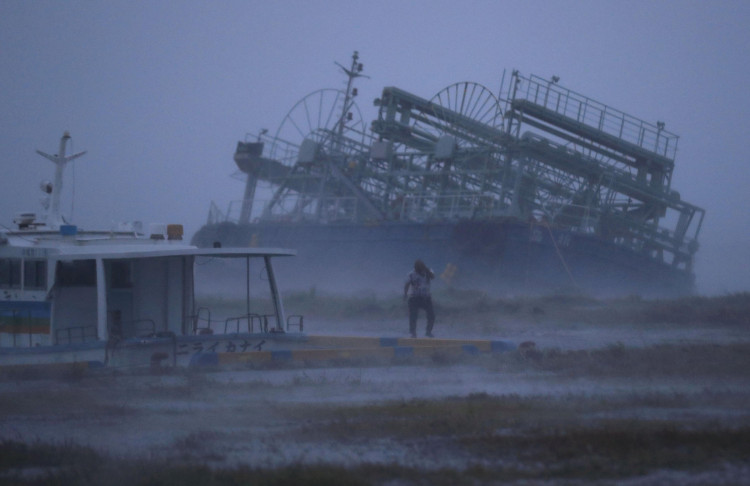Barely a month after Typhoon Jebi pounded Japan with devastating winds, the country was once again beset with yet another powerful typhoon. With an international name of Trami, the latest typhoon to hit Japan on September 30 left dozens injured and brought transport to a grinding halt. Typhoon Trami brought powerful winds and torrential rains, both were deemed causes of landslides and floods.
Typhoon Trami caused Japan's bullet train to temporarily stop operations. Additionally, more than 1,000 flights, both domestic and international, were canceled. The typhoon also prompted authorities to cancel the capital's train services.
Early weather forecasts predicted that the eye of Typhoon Trami will pass near the city of Osaka before treading a path across the Japanese archipelago. Early weather models of the typhoon's path predicted that Trami will tread through some areas that were extremely hit by Typhoon Jebi just a month before.
In the latest statistics, 65 people sustained minor injuries most of which were reported to have been cuts from shattered glass. In the Miyazaki region, one woman was reported missing as a result of torrential rainfall and localized flooding.
Prior to Typhoon Trami's landfall, Japanese authorities issued a non-compulsory evacuation advisory through public broadcaster NHK. Authorities also urged people to stay indoors and wait out for the coming storm.
Local reports revealed that nearly 500,000 households in the western regions of Okinawa and Kyushu have lost power and local utilities due to flooding and heavy winds. Reports also claim that heavy rain and violent wind gusts have made it almost impossible to venture outside during Typhoon Trami's lashing of Japan.
The initial weather forecast did not expect Typhoon Trami to hit the Japanese capital of Tokyo. However, strong winds and heavy rain have stirred local officials to cancel evening train services in the Tokyo, one of the world's busiest train network, and instead urged commuters to shelter indoors until the storm subsides.
Typhoon Trami's maximum gust wind was reported to reach 216 kilometers per hour. Trami is just the latest extreme natural disaster to hit Japan which has been battered with typhoons, earthquakes, flooding, and heat waves since the start of the year. These natural disasters have claimed thousands of lives and left extensive damage both in infrastructure and several other industries especially in agriculture.
Typhoon Trami ventured west to the Kagoshima region early Sunday where it caused minor injuries, most of which are cuts from broken glass and people getting knocked over by strong wind gusts.






